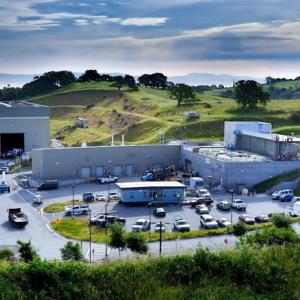Please address
inquiries to:
Email: Gilliss@slac.stanford.edu

Take a 3D Tour

 Exit Tour
Exit Tour


Take a 3D Tour
Capabilities
Office: M/S 010, 2575 Sand Hill Rd, Menlo Park, CA 94025
Phone: (650) 926-3414
Email: gilliss@slac.stanford.edu
Read BioThe Matter in Extreme Conditions (MEC) instrument at the Linac Coherent Light Source (LCLS) provides a capability that is unique in the United States, combining high power laser-matter interaction experimental capability with the diagnostic power of an LCLS hard X-ray beamline. The ultra-bright, ultrashort, tunable, spatially coherent X-rays are an ideal tool for studying dynamically compressed matter, dense plasmas, or relativistic laser-matter interactions, through a variety of X-ray scattering techniques, high resolution X-ray imaging with a spatially coherent beam, absorption spectroscopy, or resonant photo-pumping of inner-shell transitions. A 2m experimental chamber provides a versatile experimental environment, and several standard diagnostics are available. High energy density states can be created with any of three lasers: the MEC long pulse laser, with nanosecond pulse shaping and phase plates for dynamic compression experiments, the MEC short pulse laser, a CPA laser for relativistic laser matter interaction, high repetition rate (up to 5 Hz) dynamic compression, or direct laser heating, or LCLS itself, which can be tightly focused to isochorically and uniformly heat to warm dense matter conditions.
Under the auspices of LaserNetUS, MEC supports and develops capabilities for plasma science research, with a special emphasis on Inertial Fusion Energy (IFE) priority research beginning in 2023. Starting with LCLS Run 23 in December 2023, a special proposal submission category for IFE science will be encouraged and evaluated by topical experts alongside general high energy density science. LaserNetUS users in this community are strongly encouraged to submit.
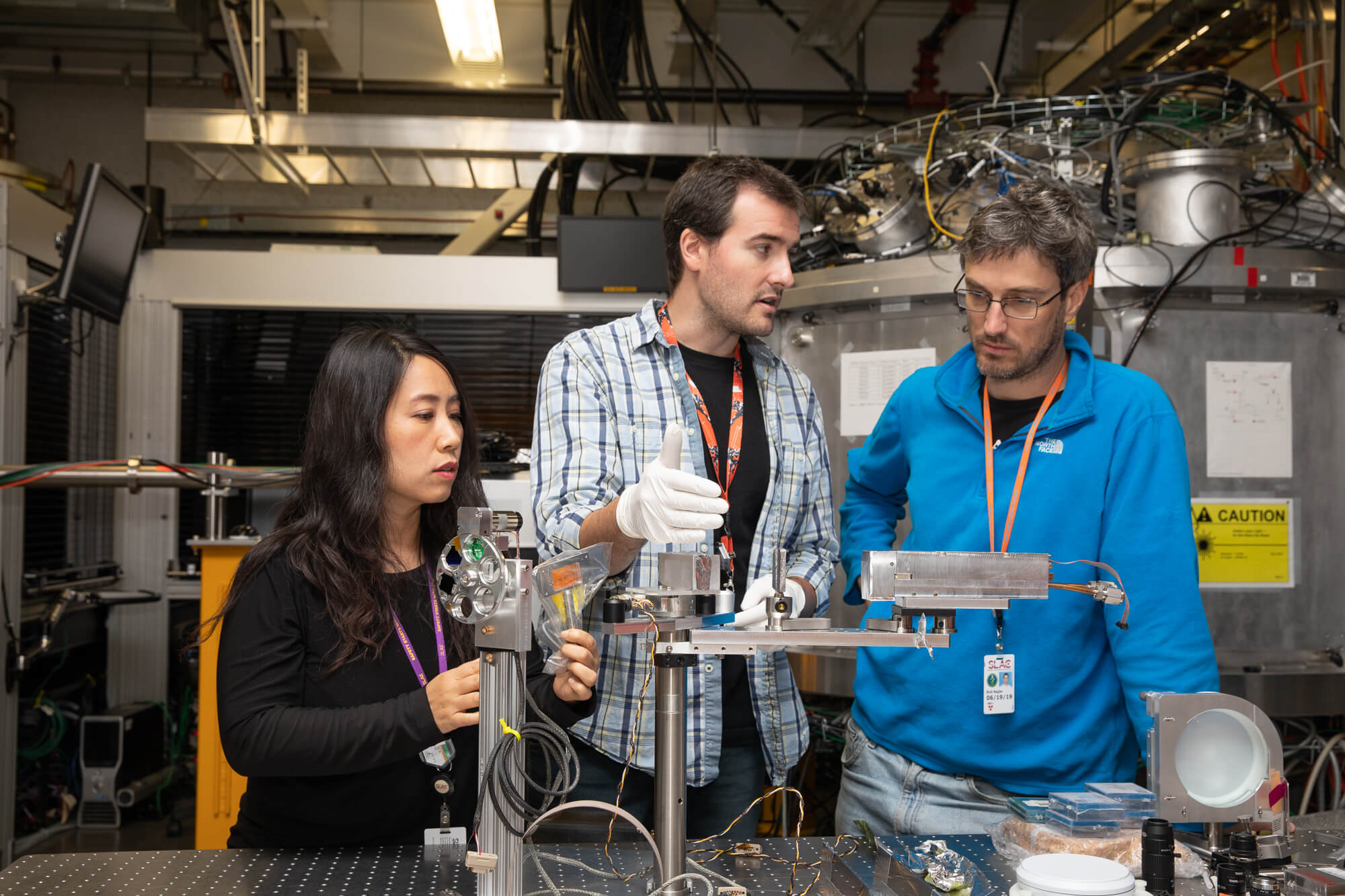
The long pulse laser at MEC is designed to provide up to 10s of Joule shapeable pulses at 527 nm to create high pressure states (typically ~ 0.1 to 4 Mbar), warm dense matter conditions, high strain rate material states, or the formation of a plasma environment. The maximum energy deliverable to target will depend greatly on pulse shape, with a reference point of 100 J deliverable in a 10 ns square pulse. This energy is split between four arms, which are polarization-multiplexed into two beamlines for delivery to target. The laser system features a diode pumped front end with exquisite pulse shaping capabilities and excellent stability. A variety of pulse shapes, from as short as 3 ns to as long as 35 ns can be provided to users, tailored to create specific thermodynamic trajectories in a compression system. The shot rate of the main amplifiers is 1 per seven minutes.
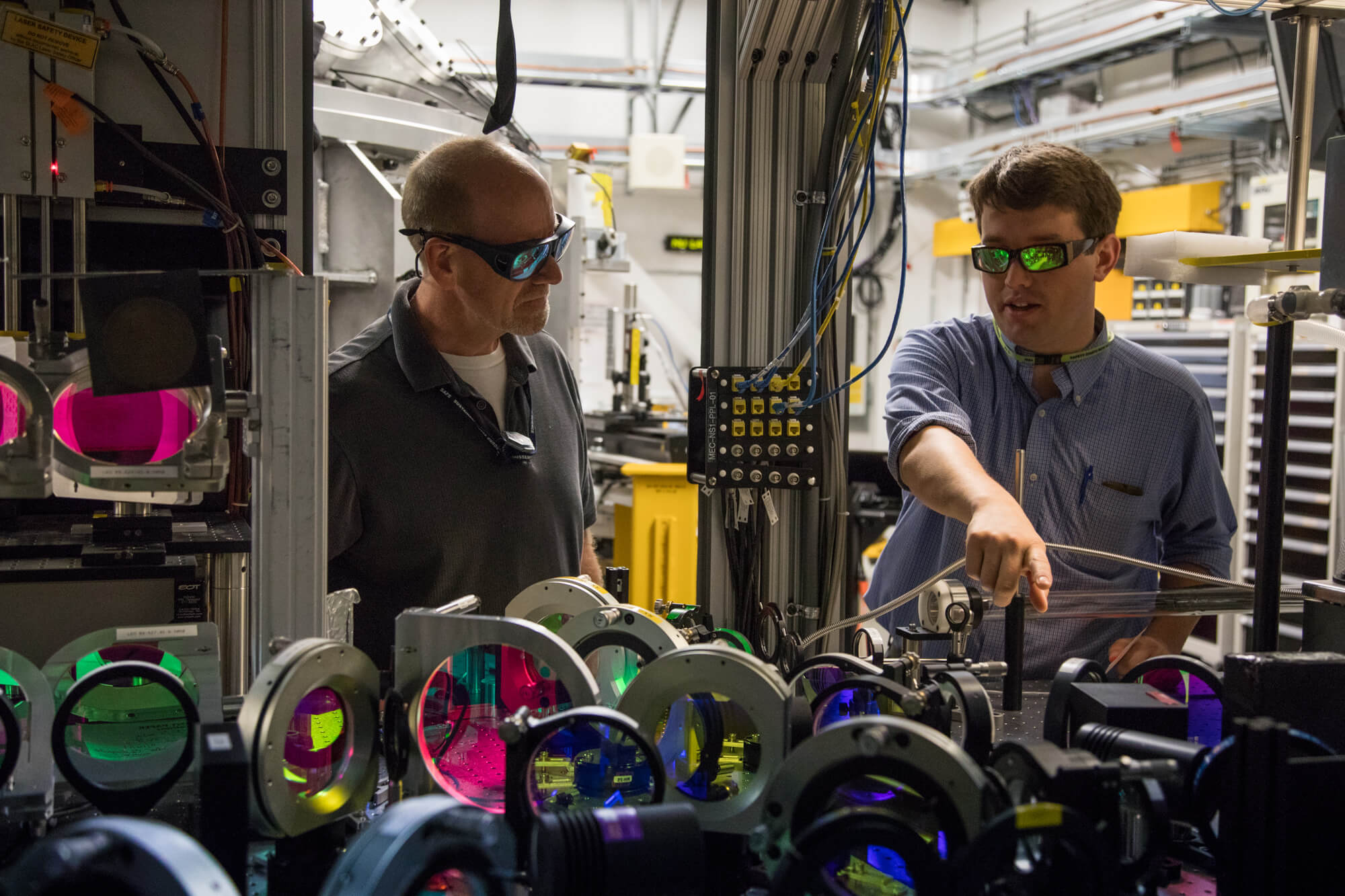
The long pulse focus can be shaped by one of several phase plates available at MEC. These phase plates produce nominally 150 µm, 300 µm, and 600 µm spot sizes with the standard aspheric lens sets, and measured beam profiles can be provided on request. Uniaxial shocks above 3 Mbar have been demonstrated in plastic ablators using the 150 µm spot; higher pressures can be reached through impedance mismatch.
MEC employs a Ti:Sapphire double CPA laser system to enable dense plasma studies and relativistic particle production. A CPA regenerative amplifier front end is delivered compressed to a pulse cleaner, the output of which is stretched to 180 ps and amplified in two bowtie amplifiers to up to 1.5 J, compressed to 1 J in 40 fs for delivery to target, at up to 5 Hz repetition rate.
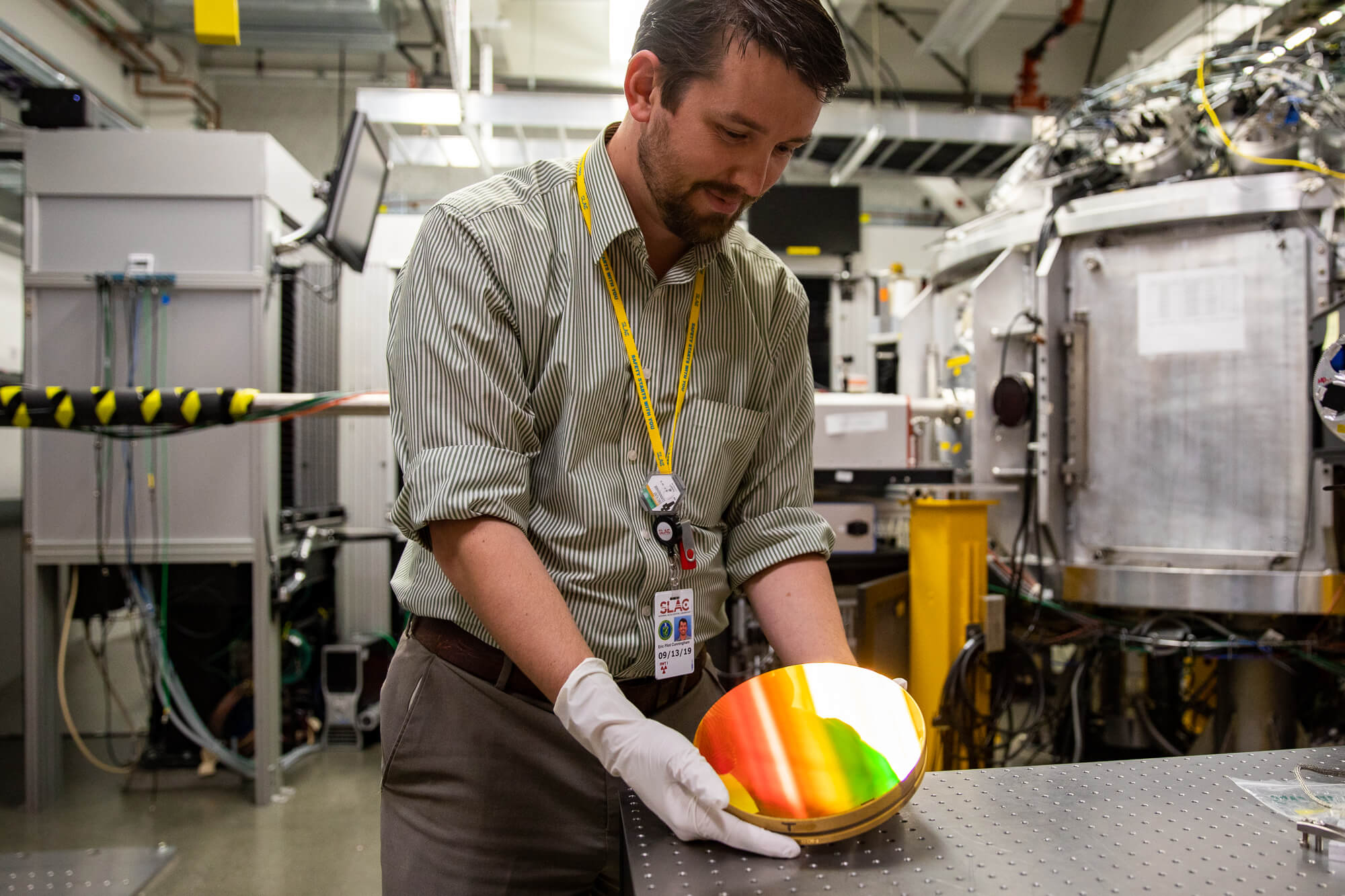
A robust pulse cleaner based on a Topas-Prime colinear OPA allows the system to achieve a pulse contrast of better than 10-8 at 4 ps, and better than 10-11 at 30 ps. This is currently the measurement threshold for the full energy output; the front end contrast reaches the noise floor of 10-12 at 5 ps.
The short pulse laser has been used in a number of specialized configurations:
Accessible for open-access proposals through LCLS calls for proposals, the MEC instrument combines the optical lasers described above with the LCLS hard X-ray beamline. Hard X-rays are provided by the normal conducting (NC) linac and hard X-ray undulator (HXU) of LCLS, and can be provided from shot on demand to 120 Hz. The photon energy can be set within the range of ~4 to 25 keV and readily tuned over several hundred eV, with self-amplified spontaneous emission bandwidth ~2.5% of the photon energy. Pulses contain up to of order 10^12 photons per pulse, or ~1 mJ, in a ~40 fs pulse. The LCLS beam has a high degree of spatial coherence, and can be focused by compound refractive lenses to spots as small as 1 µm, adjustable to 10s of µm. The long pulse laser can be synchronized to within < 50 ps to the X-rays, whereas the short pulse laser is RF locked to provide an RMS stability of about 100 to 150 fs. Using an arrival time monitor, shot-to-shot changes in the relative timing can be tagged with a precision of approximately 10 fs.
The MEC target chamber is a versatile 2 m vessel designed after the LLNL Titan and LANL Trident West target chambers. The target chamber has numerous ports on the sides, top and bottom, which can be fitted with windows, feedthrough ports, and target delivery systems. A standard target positioner with 5-axis motion and a large rastering target frame are used most frequently, but a number of custom target types have been fielded by users including rotating cylinder, gas jet and cryogenic liquid jets.
Commonly used diagnostics at MEC include dual line VISARs, a set of X-ray spectrometers covering photon energy ranges from 5 to 25 keV, a set of X-ray cameras including four large format vacuum pixel array detectors for diffraction measurements, and an X-ray imaging platform including compound refractive lenses and an Optique Peter X-ray microscope. Users should contact MEC with questions regarding existing hardware and accommodation of user-provided hardware.
MEC is an instrument of the LCLS user facility, which typically runs 10 months per year. A professional staff provides direct experimental support with each experiment dedicated points of contact for experiment setup, controls/data systems, detectors, lasers, and mechanical engineering. The LCLS facility provides a full-service user experience, from proposal development, through planning and experimental execution, to online data analysis.
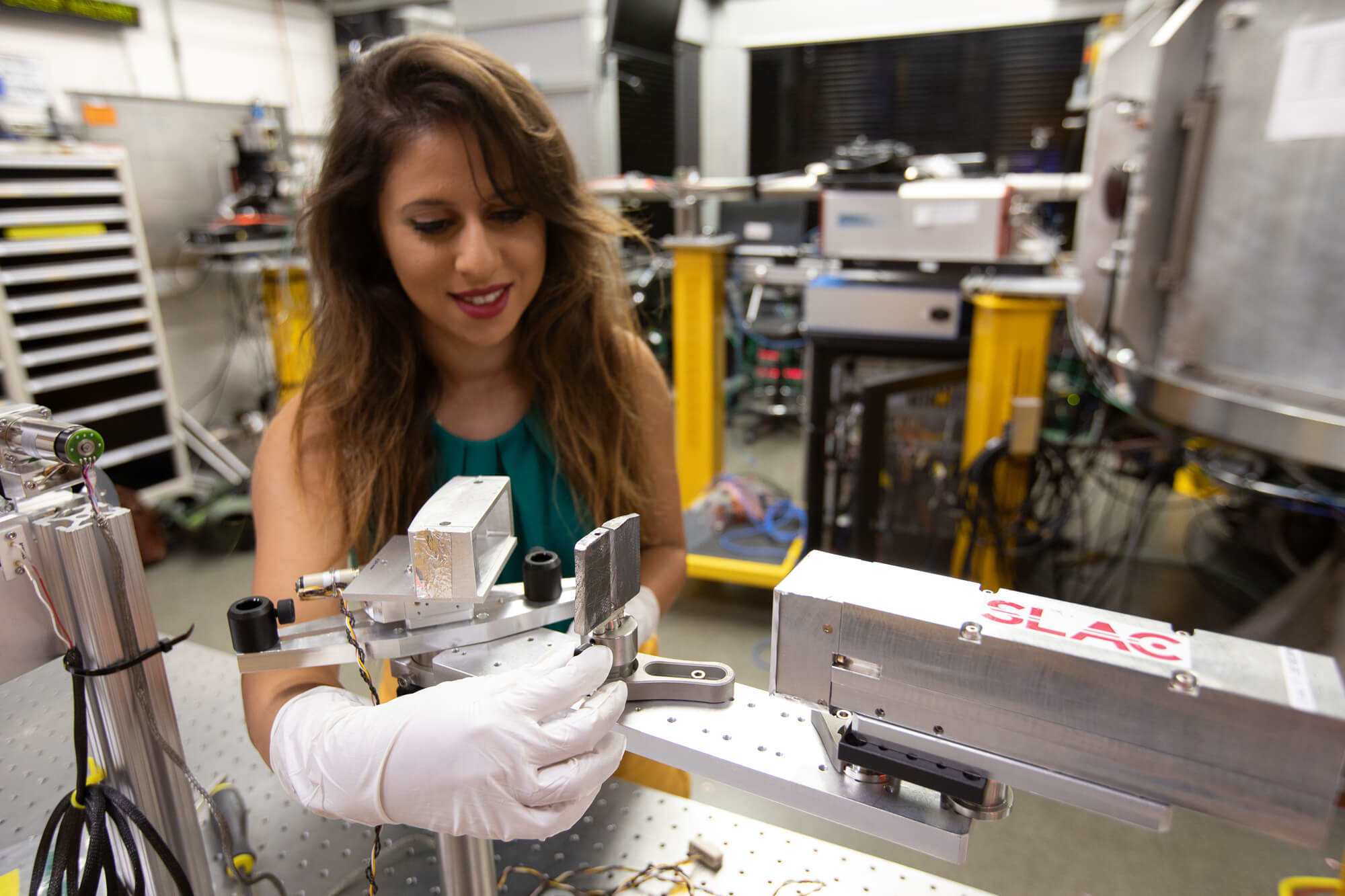
LCLS proposals use the same Universal Proposal System as for LaserNetUS calls, meaning that all named collaborators must have an ORCID. Members of an experimental team expecting to be present at MEC must satisfy SLAC access requirements for LCLS users. The spokesperson for an accepted proposal (e.g. they who submitted the proposal) will be asked to name a principal investigator (PI) for the experiment. An MEC Instrument Scientist Point Of Contact (POC) will be assigned, who will guide the PI through the steps of preparing for their laser time.
https://lcls.slac.stanford.edu/instruments/mec
Gilliss Dyer, Gilliss@slac.stanford.edu
| Parameter | Value | Unit | Additional Information | |||
|---|---|---|---|---|---|---|
| Center Wavelength | 810 | nm | ||||
| Pulse duration (I FWHM) | <50 | fs | ||||
| Max energy on target | 1 | J | ||||
| Shot energy stability | 5 | % | r.m.s. | |||
| Focal spot at target | ||||||
| F/number | f/6 | |||||
| intensity FWHM | 9 | µm | ||||
| Strehl ratio | 0.7 | |||||
| Energy containment | 74 | % | within | 9.5 | µm | radius |
| Pointing Stability | 8 | µrad | r.m.s. | |||
| Pre-pulse contrast | ||||||
| ns scale | 1E-12 | @ 1 ns | ||||
| ps scale | 1E-10 | @ 30 ps | ||||
| 1E-09 | @ 5 ps | |||||
| 1E-07 | @ 1 ps | |||||
| Repetition Rate | 5 | Hz | ||||
| Parameter | Value | Unit | Additional Information | |||
|---|---|---|---|---|---|---|
| Center Wavelength | 527 | nm | frequency doubled | |||
| Pulse duration (I FWHM) | 5-35 | ns | ||||
| Max energy on target | >2x50 | J | for 10 ns square pulse or longer; max power is 10GW | |||
| Shot energy stability | 5 | % | r.m.s. | |||
| Focal spot at target | ||||||
| F/number | 3.5 | |||||
| intensity FWHM | 30 | μm | no phase plate | |||
| Energy containment | 69 | % | within | 20 | µm | radius |
| F/number | 3.5 | |||||
| intensity FWHM | 150 | μm | phase plate | |||
| Energy containment | 61 | % | within | 76 | µm | radius |
| F/number | 3.5 | |||||
| intensity FWHM | 200 | μm | phase plate | |||
| Energy containment | 83 | % | within | 108 | µm | radius |
| F/number | 3.5 | |||||
| intensity FWHM | 370 | μm | phase plate | |||
| Energy containment | 50 | % | within | 200 | µm | radius |
| Pointing Stability | < 20 | μrad | ||||
| Repetition Rate | 1/7 | min-1 | ||||
| Parameter | Value | Unit | Additional Information | |||
|---|---|---|---|---|---|---|
| Center Wavelength | 810 | nm | ||||
| Pulse duration (I FWHM) | 130 | ps | linearly chirped | |||
| Max energy on target | 1.5 | J | ||||
| Shot energy stability | 5 | % | r.m.s. | |||
| Focal spot at target | ||||||
| F/number | 30 | representative value: contact facility | ||||
| intensity FWHM | 50 | µm | ||||
| Pointing Stability | 3.8 | µrad | ||||
| Pre-pulse contrast | ||||||
| ns scale | 1E-8 | @ 1 ns | ||||
| Repetition Rate | 5 | Hz | ||||
| Parameter | Value | Unit | Additional Information | |||
|---|---|---|---|---|---|---|
| Center Wavelength | 0.5-12.4 | Å | 4-25 keV adjustable | |||
| Pulse duration (I FWHM) | ~30 fs | fs | ||||
| Max energy on target | 2 | mJ | Max at 10 keV; photon energy dependent | |||
| Shot energy stability | 10 | % | ΔΝ/Ν | |||
| Focal spot at target | < 2 | µm | at best focus | |||
| F/number | ~3600 | at 8 keV | ||||
| intensity FWHM | ~10^17 | W/cm^2 | ||||
Contacts
Please address
inquiries to:
Email: Gilliss@slac.stanford.edu
